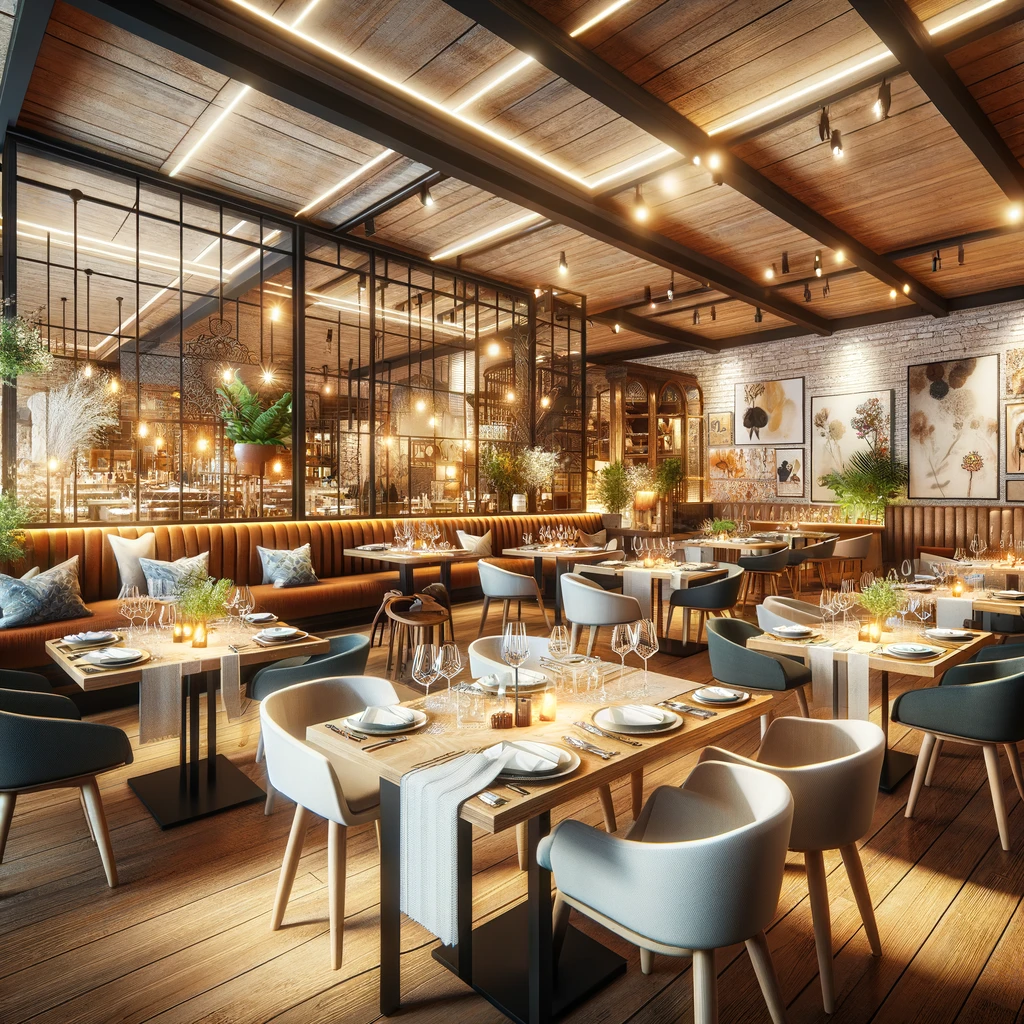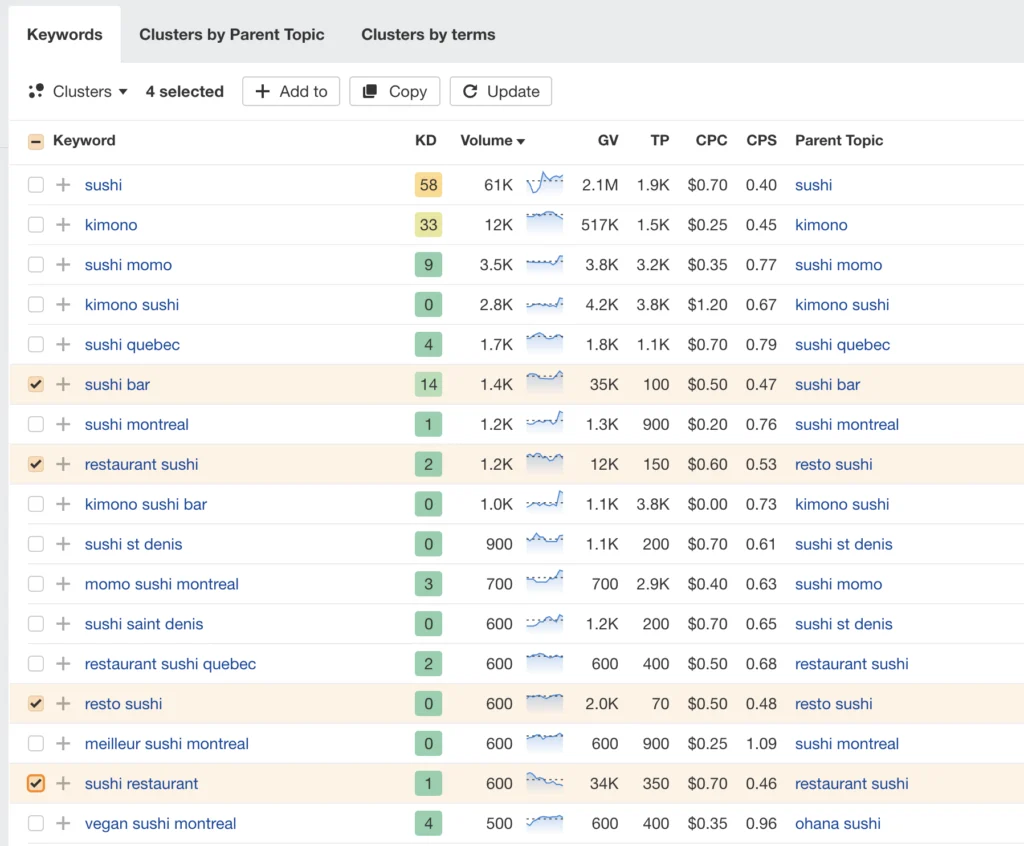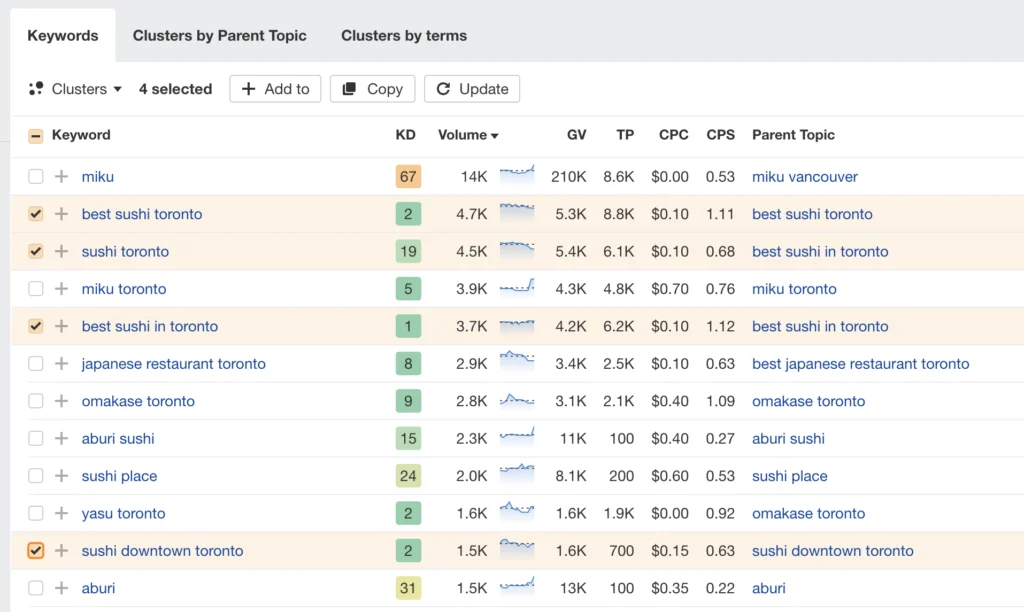GOOGLE ADS MANAGEMENT
ALL SERVICES- GRAPHIC DESIGN & BRANDING
➥ WEBSITE DESIGN TORONTO
➥ TORONTO LOGO DESIGN
➥ BROCHURE GRAPHIC DESIGN
➥ INFOGRAPHIC DESIGN
➥ BUSINESS CARD DESIGN
➥ PACKAGE DESIGN TORONTO
➥ ILLUSTRATION DESIGN
➥ ADVERTISING POSTER DESIGN
➥ BRANDING STRATEGY & SERVICES- ➤ VIEW ALL SERVICES
WEB DEVELOPMENT & SUPPORT
➥ CUSTOM WEB DESIGN TORONTO
➥ ECOMMERCE WEBSITE DESIGN TORONTO
➥ WEBSITE MAINTENANCE SERVICES
➥ SHOPIFY WEBSITE DESIGN
➥ SHOPIFY EXPERTS TORONTO
➥ WORDPRESS DEVELOPMENT
➥ WORDPRESS MAINTENANCE- ➤ VIEW ALL SERVICES
WEBSITE MARKETING & CONTENT
➥ SEO PACKAGES TORONTO
➥ TORONTO SOCIAL MEDIA AGENCY
➥ CONTENT MARKETING TORONTO
➥ PPC MANAGEMENT TORONTO
➥ AFFILIATE MARKETING CANADA
➥ STRATEGIC CONSULTATION
➥ AI & LLMO SEO- ➤ VIEW ALL SERVICES
ABOUT
RESOURCES- LET’S CHAT
Questions? Call us at
647-348-4995

GOOGLE ADS MANAGEMENT
ALL SERVICES- GRAPHIC DESIGN & BRANDING
➥ WEBSITE DESIGN TORONTO
➥ TORONTO LOGO DESIGN
➥ BROCHURE GRAPHIC DESIGN
➥ INFOGRAPHIC DESIGN
➥ BUSINESS CARD DESIGN
➥ PACKAGE DESIGN TORONTO
➥ ILLUSTRATION DESIGN
➥ ADVERTISING POSTER DESIGN
➥ BRANDING STRATEGY & SERVICES- ➤ VIEW ALL SERVICES
WEB DEVELOPMENT & SUPPORT
➥ CUSTOM WEB DESIGN TORONTO
➥ ECOMMERCE WEBSITE DESIGN TORONTO
➥ WEBSITE MAINTENANCE SERVICES
➥ SHOPIFY WEBSITE DESIGN
➥ SHOPIFY EXPERTS TORONTO
➥ WORDPRESS DEVELOPMENT
➥ WORDPRESS MAINTENANCE- ➤ VIEW ALL SERVICES
WEBSITE MARKETING & CONTENT
➥ SEO PACKAGES TORONTO
➥ TORONTO SOCIAL MEDIA AGENCY
➥ CONTENT MARKETING TORONTO
➥ PPC MANAGEMENT TORONTO
➥ AFFILIATE MARKETING CANADA
➥ STRATEGIC CONSULTATION
➥ AI & LLMO SEO- ➤ VIEW ALL SERVICES
ABOUT
RESOURCES- LET’S CHAT
Questions? Call us at
647-348-4995

GOOGLE ADS MANAGEMENT
ALL SERVICES- GRAPHIC DESIGN & BRANDING
➥ WEBSITE DESIGN TORONTO
➥ TORONTO LOGO DESIGN
➥ BROCHURE GRAPHIC DESIGN
➥ INFOGRAPHIC DESIGN
➥ BUSINESS CARD DESIGN
➥ PACKAGE DESIGN TORONTO
➥ ILLUSTRATION DESIGN
➥ ADVERTISING POSTER DESIGN
➥ BRANDING STRATEGY & SERVICES- ➤ VIEW ALL SERVICES
WEB DEVELOPMENT & SUPPORT
➥ CUSTOM WEB DESIGN TORONTO
➥ ECOMMERCE WEBSITE DESIGN TORONTO
➥ WEBSITE MAINTENANCE SERVICES
➥ SHOPIFY WEBSITE DESIGN
➥ SHOPIFY EXPERTS TORONTO
➥ WORDPRESS DEVELOPMENT
➥ WORDPRESS MAINTENANCE- ➤ VIEW ALL SERVICES
WEBSITE MARKETING & CONTENT
➥ SEO PACKAGES TORONTO
➥ TORONTO SOCIAL MEDIA AGENCY
➥ CONTENT MARKETING TORONTO
➥ PPC MANAGEMENT TORONTO
➥ AFFILIATE MARKETING CANADA
➥ STRATEGIC CONSULTATION
➥ AI & LLMO SEO- ➤ VIEW ALL SERVICES
ABOUT
RESOURCES- LET’S CHAT
Questions? Call us at
647-348-4995

GOOGLE ADS MANAGEMENT
ALL SERVICES- GRAPHIC DESIGN & BRANDING
➥ WEBSITE DESIGN TORONTO
➥ TORONTO LOGO DESIGN
➥ BROCHURE GRAPHIC DESIGN
➥ INFOGRAPHIC DESIGN
➥ BUSINESS CARD DESIGN
➥ PACKAGE DESIGN TORONTO
➥ ILLUSTRATION DESIGN
➥ ADVERTISING POSTER DESIGN
➥ BRANDING STRATEGY & SERVICES- ➤ VIEW ALL SERVICES
WEB DEVELOPMENT & SUPPORT
➥ CUSTOM WEB DESIGN TORONTO
➥ ECOMMERCE WEBSITE DESIGN TORONTO
➥ WEBSITE MAINTENANCE SERVICES
➥ SHOPIFY WEBSITE DESIGN
➥ SHOPIFY EXPERTS TORONTO
➥ WORDPRESS DEVELOPMENT
➥ WORDPRESS MAINTENANCE- ➤ VIEW ALL SERVICES
WEBSITE MARKETING & CONTENT
➥ SEO PACKAGES TORONTO
➥ TORONTO SOCIAL MEDIA AGENCY
➥ CONTENT MARKETING TORONTO
➥ PPC MANAGEMENT TORONTO
➥ AFFILIATE MARKETING CANADA
➥ STRATEGIC CONSULTATION
➥ AI & LLMO SEO- ➤ VIEW ALL SERVICES
ABOUT
RESOURCES- LET’S CHAT
Questions? Call us at
647-348-4995
![]()
![]()
![]()

- February 27, 2024
-
Liam Hunt
In today’s fiercely competitive market, boasting delicious food and impeccable service is merely the starting point for getting your restaurant to succeed. With an estimated $83.3 billion spent at Canadian restaurants in 2023, the real challenge lies in differentiating your restaurant from countless others.
Fierce local competition means that restaurants must not only aim to be the best in their category or cuisine but also the most visible and accessible in their locality. This requires a multifaceted approach that combines digital prowess with grassroots strategies, ensuring that your restaurant becomes a well-known name both online and within the community.
This article outlines strategies to increase your restaurant’s visibility, enhance customer engagement, and drive sales, paving the way for sustained growth and success in the competitive world of food and hospitality.
1. Develop an Effective Online Presence
Having a strong online presence is crucial for restaurants in today’s digital age. It not only helps you reach a wider audience but also allows you to engage with your customers and build brand loyalty.
Here are some key strategies to develop an effective online presence for your restaurant:
Strategy 1: Optimize Your Website
With the increasing use of smartphones, it is essential to have a website that is optimized for mobile devices. A mobile-friendly website ensures that your customers can easily navigate and access information about your restaurant on their phones or tablets.
Strategy 2: Keep Your Content Fresh
Keeping your website content fresh and up-to-date is essential for attracting and retaining customers. Regularly update your menu, add new blog posts or articles about your restaurant, and showcase any special events or promotions. This not only provides valuable information to your customers but also improves your search engine rankings.
Strategy 3: Make it Easy to Use
A user-friendly website is crucial for providing a seamless browsing experience to your customers. Focus on creating an intuitive design that allows users to navigate effortlessly through your website, find information quickly, and make reservations or orders easily.
Strategy 4: Show Off Your Best Side
Visual content plays a significant role in enticing customers to visit your restaurant. Use high-quality images of your food, ambiance, and staff to showcase the unique experience you offer. Videos can also be used to give virtual tours of your restaurant or demonstrate cooking techniques.
By implementing these strategies, you can establish a strong online presence that attracts potential customers and keeps them engaged with your restaurant.
Remember, consistency is key when it comes to maintaining an effective online presence. Regularly update your website and engage with your audience through social media platforms to stay top-of-mind in the competitive restaurant industry.
(For more detailed assistance with developing an effective online presence for your restaurant marketing needs, you can visit Little Dragon Media’s restaurant marketing page.)
2. Implement a Comprehensive SEO Strategy
Implementing a robust SEO strategy is crucial for restaurant marketing in the digital age. It allows restaurants to enhance their online visibility, attract more organic traffic, and ultimately increase customer footfall.
Steps for Developing an Effective SEO Strategy
1. Keyword Research
Begin by conducting in-depth keyword research to identify relevant terms and phrases that potential customers are using to search for restaurants and cuisines in your area.
2. On-Page Optimization Techniques
Optimize website elements such as titles, meta descriptions, and content to align with the identified keywords, improving the website’s relevance to search queries.
3. Content Creation Strategies
Develop high-quality, keyword-rich content that provides value to visitors. Utilize blogs, reviews, and guides to engage users while incorporating targeted keywords naturally.
4. Backlinking Strategies
Acquire high-quality backlinks from reputable websites within the food and hospitality industry. Backlinks from authoritative sources can significantly boost a restaurant’s credibility in the eyes of search engines.
5. Local SEO Optimization
Ensure that the restaurant’s information is accurately listed across various local directories and platforms. This includes Google My Business, Yelp, and other relevant platforms to improve visibility in local search results.
By implementing these steps effectively, restaurants can improve their search engine rankings, increase online visibility, and drive more organic traffic to their websites.
3. Improve Keyword Research for Better Targeting and Visibility
Improving keyword research campaigns is vital for restaurants to enhance their targeting and visibility in search engine results. By finding the right keywords that connect with their target audience, restaurants can optimize their website content and attract more relevant traffic. Here are some strategies to enhance keyword lists through competitor analysis and search volume analysis:
Competitor Analysis
Analyzing competitor keywords can provide valuable insights into the keywords that are driving traffic to their websites. Tools like Moz, SEMrush, and Ahrefs can help identify the keywords that competitors are ranking for. By understanding which keywords your competitors are targeting, you can uncover new keyword opportunities and refine your own keyword list accordingly.
Search Volume Analysis
It’s important to consider the search volume of keywords when refining your keyword list. Tools like Ahrefs can provide data on search volume, allowing you to prioritize keywords that have a higher search volume. However, it’s also important to strike a balance between high search volume keywords and low competition keywords to increase your chances of ranking higher in search results.

A list of highlighted keywords suitable for a sushi restaurant.
The keywords identified above provide an excellent starting point for a sushi restaurant. These keywords are marked by low keyword difficulty (KD) scores (<15) while generating high monthly search volume (600-1.4K).
Long-tail Keywords
Long-tail keywords are longer and more specific phrases that have less competition but often indicate higher purchase intent from users. These keywords can help you target a niche audience and attract visitors who are more likely to convert into customers. For example, instead of targeting the broad keyword “sushi,” you could target a long-tail keyword like “best sushi in [city name].”

Long-tail local SEO keyword opportunities for a sushi restaurant in Toronto.
Above, I’ve highlighted long-tail keywords that would generate significant traffic for Toronto-based searchers. This is part of a “local SEO” strategy that focuses on traffic within one’s geographic vicinity.
Monitor Keyword Performance
Once you have refined your keyword list, it’s essential to monitor the performance of these keywords over time. Tools like Ahrefs can help track your keyword rankings and provide insights into how well your website is performing for specific keywords. By regularly monitoring keyword performance, you can make adjustments to your SEO strategy as needed.
Effective keyword research and refinement is an ongoing process. As search trends and user behavior change, it’s important to continuously analyze and refine your keyword strategy to stay ahead of the competition and maintain visibility in search engine results.
By improving your keyword research campaigns through competitor analysis and search volume analysis, you can better target your audience and improve your restaurant’s visibility in search engine results.
4. Make the Most of Social Media Platforms
Social media platforms are now essential tools for restaurant marketing. They offer many benefits for engaging with customers and growing your business. Here are some important points to consider:
Benefits of Using Social Media Platforms
Social media platforms let restaurants directly connect with both existing and potential customers. They provide opportunities to:
- Showcase menu items
- Share updates about special events or promotions
- Gather valuable feedback from patrons
A strong social media presence can also enhance brand visibility and create a sense of community among followers.
Choosing the Right Platforms
It’s crucial to identify the social media platforms that match your target audience demographics and the nature of your restaurant’s products or services. For example:
- Visually appealing dishes may find more success on Instagram
- Informative content might perform well on Facebook
Understanding where your target audience is most active will help you make the most of your marketing efforts.
Effective Engagement Strategies
Encouraging meaningful interactions through comments, user-generated content, and timely responses can make your brand more relatable and build customer loyalty. It’s important to engage with your followers in an authentic way that creates positive experiences.
The Power of Visuals and Targeted Ads
High-quality visuals are key to grabbing attention and showcasing the dining experience you offer. Using targeted Google Ads or social media ads can also help you reach specific demographics or user behaviors, increasing your reach and engagement.
By using these strategies effectively, you can harness the power of social media platforms to build strong relationships with customers and drive long-term growth.
5. Implementing Loyalty Programs to Retain Customers
Loyalty programs are essential in keeping customers and building long-term connections. Restaurants can use incentives and rewards to encourage repeat business and foster loyalty among their customers. Here are some things to consider when implementing loyalty programs for your restaurant:
Why Loyalty Programs Matter
Loyalty programs are valuable for restaurants because they help retain existing customers and attract new ones. By giving rewards and incentives, you create an exclusive feeling and show appreciation to customers, which increases their chances of coming back.
The Benefits of Repeat Business from Loyal Customers
Customers who are loyal to your business tend to spend more money and recommend your restaurant to others. Research shows that increasing customer retention rates by just 5% can lead to a 25%-95% increase in profits. A well-designed loyalty program can encourage customers to keep choosing your restaurant over competitors.
Strategies for Designing and Implementing Effective Loyalty Programs
Here are some tips on creating a successful loyalty program for your restaurant:
- Define clear objectives: Before designing a loyalty program, clearly define your goals and what you want to achieve. This will help you tailor the program to meet the specific needs of your restaurant.
- Choose the right rewards: Offer rewards that are both valuable to your customers and cost-effective for your business. Consider offering discounts, free items, exclusive access, or even personalized experiences.
- Make it easy to join: Simplify the enrollment process by allowing customers to sign up easily either through a mobile app, a well-designed restaurant website, or in-store registration. Avoid lengthy forms or complicated procedures that might discourage participation.
- Personalization is key: Use customer data to personalize the rewards and offers you provide. Tailor promotions based on individual preferences and purchase history to make customers feel valued.
- Engage with customers: Regularly communicate with your loyalty program members through email newsletters, notifications, or social media updates. Keep them informed about upcoming promotions, special events, or new menu items or designs.
- Track and analyze data: Utilize a customer relationship management (CRM) system to track customer behavior and preferences. Analyze the data to gain insights into their spending habits and adjust your loyalty program accordingly.
Implementing a well-designed loyalty program can significantly impact customer retention rates and overall revenue. By offering meaningful rewards and incentives, you can create a loyal customer base that will continue to support your restaurant in the long run.
6. Enhance Restaurant Layout and Design
A well-designed store layout can greatly improve the dining experience for customers. It helps guide them through the restaurant, creates attractive displays, and ensures easy movement.
Strategies to Enhance Your Restaurant Layout:
1. Understand how customers move
Study how customers enter your restaurant and move around. Identify any areas where they may face problems or get stuck. Make changes to ensure a smooth flow throughout.
2. Arrange seating thoughtfully
Decide on the type of dining experience you want to provide—casual, fine dining, or quick service—and arrange seating accordingly. Create comfortable spaces with enough room and proper spacing between tables. Ensure that busy spots like entrances and restrooms don’t disturb diners.
3. Highlight with displays
Use displays in strategic places to showcase new menu items, specials, or offers. These displays should catch the eye and tempt customers to explore more. Think about using appealing pictures or videos that highlight your food and create excitement.
4. Guide with clear signs
Good signage is essential for directing customers to different parts of your restaurant, such as restrooms, exits, or pickup counters. Place signs where they’re easy to see and make sense. Use the same branding elements in all your signs to reinforce your brand.
5. Maintain cleanliness and orderliness
A clean and well-arranged restaurant leaves a positive impression on customers. Keep everything tidy – from restrooms to dining areas. Put condiments, utensils, and napkins in places where customers can find them easily.
6. Choose lighting wisely
Lighting sets the mood in your restaurant and affects how people feel while eating. Use different types of lighting—like soft lights, bright lights, or focused lights—to create a warm and inviting atmosphere. Make sure each area has suitable lighting – like dimmer lights for cozy spots and brighter lights for busy areas.
Remember, improving your store layout and design is an ongoing job. Listen to what customers say and make changes when needed to create a great dining experience.
By enhancing your store layout and design, you can improve the overall customer experience and make a friendly place where people want to come back.
7. Invest in Comprehensive Staff Training
Investing in comprehensive staff training is crucial for ensuring better customer service and an overall positive dining experience. Well-trained wait staff can significantly impact the restaurant’s reputation and customer satisfaction. Here are some key talking points to consider when investing in staff training:
Importance of Staff Training
- Trained staff can provide better customer service, handle challenging situations effectively, and create a welcoming atmosphere for diners.
- Well-trained employees are more confident and knowledgeable about the menu, special offerings, and can make informed recommendations to customers.
Creating Personalized Dining Experiences
- Staff training should focus on utilizing customer data to enhance personalized dining experiences.
- Understanding customer preferences, dietary restrictions, and past dining experiences can help staff tailor their service to individual guests.
Gathering and Acting on Customer Feedback
- Implement strategies for gathering feedback through comment cards, online reviews, or social media platforms.
- Training employees to actively listen to customer feedback and take appropriate actions to address any concerns or suggestions.
By prioritizing staff training, restaurants can elevate the overall dining experience, foster customer loyalty, and set themselves apart from competitors.
8. Plan In-Person Events to Engage Customers
When it comes to restaurant marketing, planning and hosting in-person events can significantly benefit your business and brand visibility. Here are some talking points to consider:
Benefits of Planning In-Person Events
- In-person events provide a unique opportunity to connect with your customers on a personal level, fostering a sense of community around your restaurant.
- Hosting events such as themed dinners, live music nights, or cooking classes can create memorable experiences that keep customers coming back.
- Events also serve as an effective way to showcase your restaurant’s ambiance, menu offerings, and overall brand identity.
Strategies for Engaging Customers Through Events
- Identify the interests of your target audience and plan events that align with their preferences. For example, if your restaurant caters to families, consider hosting family-friendly events or kids’ cooking classes.
- Collaborate with local artists, musicians, or other businesses to co-host events, expanding your reach and attracting new customers.
- Use social media and email marketing to promote upcoming events and encourage customer participation.
By strategically planning and executing in-person events, restaurants can create meaningful connections with their patrons while enhancing their brand visibility within the community.
9. Leverage Influencer Partnerships for Wider Reach
In today’s social media era, using influencer partnerships can greatly increase a restaurant’s visibility and reach. Working with social media influencers and food bloggers allows restaurants to tap into the influencer’s established audience, thereby expanding their reach and attracting new customers.
The Importance of Using Influencer Partnerships
Influencers have control over a dedicated following that values their recommendations and insights. By partnering with influencers whose content aligns with the restaurant’s brand and target audience, restaurants can effectively use the influencer’s credibility to improve their brand visibility. This can lead to more people coming in, making reservations, and overall awareness within the community.
Tips for Finding and Working with Relevant Influencers and Food Bloggers
Here are some strategies for identifying and collaborating with influencers who will be most beneficial for your restaurant:
- Relevance: Identify influencers whose content matches well with your restaurant’s theme, cuisine, or values. For example, if you run a vegan restaurant, it would make sense to collaborate with influencers who focus on plant-based lifestyles.
- Engagement: Look for influencers with high engagement rates. This shows that they have an active and responsive audience who genuinely enjoys their content.
- Authenticity: Prioritize authenticity over follower count. Micro-influencers with a smaller but dedicated following often have higher engagement and trust levels among their audience.
- Clear Communication: When reaching out to potential partners, clearly explain the mutual benefits of working together, such as offering exclusive tasting events or special promotions for the influencer’s followers.
- Long-Term Relationships: Try to establish long-term partnerships with influencers who truly connect with what your restaurant has to offer. Building lasting relationships can result in repeated exposure to the influencer’s audience, creating brand loyalty and trust over time.
By carefully choosing and collaborating with relevant influencers and food bloggers, restaurants can increase their online presence, attract new customers, and ultimately experience rapid growth in their business.
10. Provide Outstanding Customer Service at Every Touchpoint
Providing exceptional customer service is crucial for the success and growth of any restaurant. From online interactions to in-person dining experiences, every touchpoint is an opportunity to impress and delight customers. Here are some key points to consider when aiming to provide outstanding customer service:
Prompt and Courteous Online Interactions
Responding promptly to customer inquiries and comments on social media platforms, review websites, or through email shows that you value their feedback and are committed to providing excellent service. Use a friendly tone and address any concerns or complaints with empathy and professionalism.
Manage Online Reviews Effectively
Online reviews play a significant role in shaping a restaurant’s reputation. Regularly monitor review platforms like Yelp, Google My Business, or TripAdvisor, and respond promptly to both positive and negative reviews. Thank customers for their positive feedback and address any negative reviews by acknowledging the issue, apologizing if necessary, and offering a solution. This demonstrates your commitment to resolving problems and shows potential customers that you care about their experience.
Consistency Across All Touchpoints
Consistency is key when it comes to customer service. Ensure that your staff members are trained to provide the same level of exceptional service whether it’s during phone interactions, online ordering, dine-in experiences, or delivery services. Consistency builds trust and loyalty among customers.
Gather Feedback and Take Action
Actively seek feedback from your customers through surveys, comment cards, or social media polls. Analyze this feedback regularly to identify areas for improvement and implement necessary changes. Engage with customers who provide feedback by thanking them for their input and letting them know how you have addressed their concerns.
Empower Your Staff
Invest in comprehensive staff training programs that focus on enhancing communication skills, product knowledge, and problem-solving abilities. Empower your staff members to go above and beyond for customers by giving them the authority to make decisions and resolve issues effectively. This will create a positive and memorable experience for customers.
Personalize the Dining Experience
Use customer data to personalize the dining experience whenever possible. Remember and acknowledge returning customers, offer personalized recommendations based on their past orders or preferences, and make them feel valued and appreciated. This level of personalization creates a sense of connection and fosters customer loyalty.
Remember, outstanding customer service can turn first-time visitors into loyal patrons and generate positive word-of-mouth referrals. By consistently providing exceptional service at every touchpoint, you can ensure high levels of customer satisfaction and contribute to the rapid growth of your restaurant.
The Final Course: A Recipe for Restaurant Marketing Success
Effective marketing is the key to unlocking rapid growth for restaurants amid fierce competition. The strategies outlined offer a roadmap to enhance your online presence, captivate more customers, and ensure their loyalty. Whether it’s through a well-crafted online presence, smart SEO tactics, engaging social media practices, or memorable in-person experiences, these tips are designed to elevate your restaurant’s profile and foster sustainable growth.
At the heart of an effective restaurant marketing strategy is understanding the importance of connection—connecting with your customers through every digital touchpoint and every plate served. It’s about creating a seamless experience that starts from the moment they discover your restaurant online to the warmth they feel stepping through your doors and the satisfaction of their dining experience.
Need more specialized support for your restaurant marketing and advertising? Hire the restaurant marketing experts at Little Dragon Media to handle your entire strategy creation and implementation today.
Liam Hunt, M.A., is a writer and digital marketing specialist whose writing has appeared in the Vancouver Sun, Asia Times, and US News and World Report.
RECENT POSTS
- Top 10 Best Canadian Affiliate Marketing Programs & Offers
- Zensurance – Good Business Policy? Read a Review From a Client…
- Ownr – Legit or No? We Review The Company, Service & Fees
- 10 Small Business Loans & Financing Options in Ontario
- Top 11 Canadian Business Bank Accounts (Comparing Fees & Reviews)

Ready to chat about how Little Dragon Media can enhance your business?
Call us now at 647-348-4995 or

OUR AWARDS & CERTIFICATIONS






WHAT OUR CLIENTS ARE SAYING



Little Dragon Media's professionalism and commitment to delivering excellence are truly commendable. I highly recommend their services... Thank you for your stellar work!
- Delna Bharucha

Little Dragon Media worked on developing our logo and website. They did an absolutely AMAZING job on both projects. These guys ROCK and you won't be disappointed.
- Sonia Nutt

My team had a great experience working with Little Dragon Media. We will certainly engage with Little Dragon Media for any additional projects in the future. Highly recommend!
- Carly Rooney



- 682A St-Clair West Toronto, ON M6C 1B1
- (647)-348-4995
- info@littledragon.ca
MOST POPULAR SERVICES
RECENT POSTS
GET MORE CLIENTS
Don't let your competitors take over. We'll help you climb to the top and get more clients.



- 682A St-Clair West Toronto, ON M6C1B1
- (647)-348-4995
- info@littledragon.ca
MOST POPULAR SERVICES
RECENT POSTS
GET MORE CLIENTS
Don't let your competitors take over. We'll help you climb to the top and get more clients.

Contact | Press Mentions | Privacy Policy | Terms of Service
© 2024 Little Dragon Media. All Rights Reserved.






